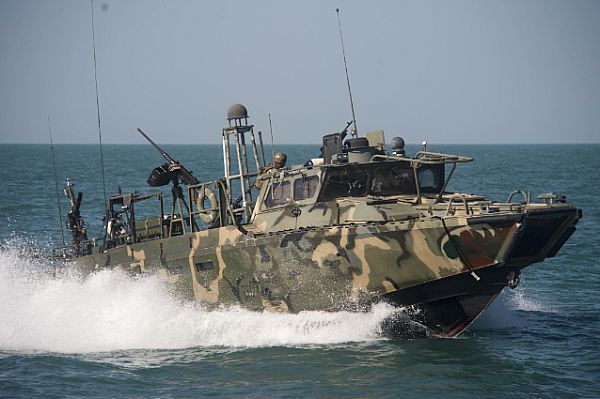Let me start off by saying that last week wasn’t my Navy’s finest hour. When news came in Thursday night that ten U.S. Navy sailors had “drifted into Iran territorial waters” and had been detained, there was a sense of deja-vu. I thought about the collision in 2001 between a reckless Chinese fighter pilot and a Navy EP-3 surveillance plane. Known as the Hainan Island Incident, 24 sailors were detained for eleven days, interrogated at all times of day and night. The incident was George W. Bush’s first international crisis and it wasn’t clear things would be resolved amicably.
The Navy tends to avoid entering unfriendly waters (well … most of the time!). The Persian Gulf (or Arabian Gulf as the USN refers to it) is tiny as far as bodies of water go. Our sailors are well aware of who occupies the eastern shore of the Gulf and know to steer clear of it. That doesn’t mean that encounters between Iranians and Americans don’t still take place. I vividly recall how surreal it was to lock eyes with curious Iranian ferry passengers as they motored slowly by my ship once in the Gulf. It was clear at that moment how ridiculous the bluster of our respective governments was.
In 1991, the GPS on my destroyer was literally the size of a microwave oven. Today GPSs are in watches, phones, computers, and a lot of other devices. A world of satellite imagery can be carried in one’s pocket. What’s more, satellite phones can communicate from literally anywhere on the surface of the planet. The typical civilian shipborne radar in the Gulf can light up half the shoreline.
The U.S. Navy has been operating continuously in the Gulf for well over half a century. Our sailors know the neighborhood. They have the best navigation tools available and the best communications equipment. Is it any wonder that Iran was incredulous of our boats’ incursion into their territorial waters? This isn’t supposed to happen. Yet it did.
Initial reports from the Department of Defense claimed one of the boats suffered mechanical difficulty. This explanation was soon walked back, though no other explanation was offered. We still don’t know why it happened, only that it did.
The Navy’s slang for falsifying reports is called gundecking. Someone in the chain of command is gundecking here. The boat was said to be disabled, then it wasn’t. The best navigational and communications equipment couldn’t keep our sailors from straying into Iran’s well-known territorial waters. No communication was sent to the fleet, either. How is this plausible?
To Iran’s credit, they kept their word and released the sailors as they said they would. Hillary might not like it (and that is why she fails … sigh) but they deserve our thanks for returning our sailors and stuff. We screwed up, clearly. Now it will be interesting to see whose career ends because of this debacle.
